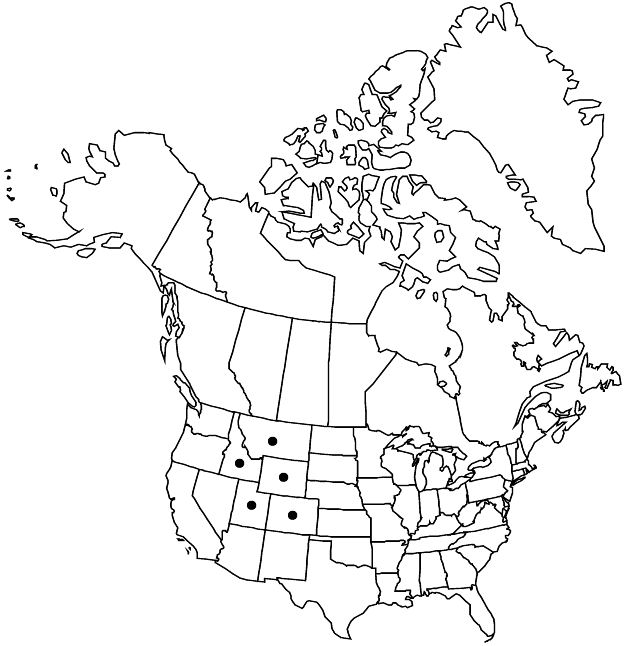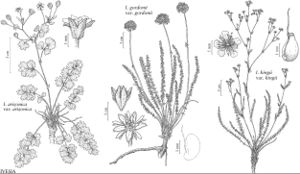Ivesia gordonii var. gordonii
Stems usually greenish, ascending to erect, (0.5–) 1–2.5 dm, usually hirsute to villous, sometimes densely so, glandular-pubescent or eglandular. Basal leaves (3–) 5–10 (–15) × 0.5–1.5 cm; leaflets (1–) 3–7 (–9) mm, hirsute to villous, sometimes hairy only marginally. Inflorescences 10–30-flowered, simple or branched, (1–) 2–3 (–5) cm diam., glomerules 1 (–3), ± capitate. Flowers 7–12 mm diam.; epicalyx bractlets (1.5–) 2–3 (–3.5) mm; hypanthium 2–4 × 2.5–4 mm; sepals (2.5–) 3.5–5 mm, ± acute; anthers rarely red-margined.
Phenology: Flowering summer.
Habitat: Gravelly to rocky flats, slopes, and outcrops, in grassland and sagebrush communities, montane and subalpine conifer woodlands
Elevation: 2000–3600 m
Distribution

Colo., Idaho, Mont., Utah, Wyo.
Discussion
Variety gordonii occurs from western Montana and eastern Idaho through western and central Wyoming to western Colorado, and in the Uinta and Wasatch mountains of northeastern Utah. Plants have either villous stems, or stems that are both hirsute to villous and glandular-puberulent or -pubescent. Leaflets are usually densely hirsute, and the inflorescence is nearly always simply capitate. The variety is most distinctive at relatively low elevations in Montana south to the Uinta Mountains (Utah) and Moffat County, Colorado, where it is an erect, medium-sized plant with densely hairy leaves. Some populations here assigned to var. gordonii have features of var. wasatchensis, such as branched inflorescences in the Big Horn Mountains of Wyoming, or glabrate vestiture in the northern Colorado Rocky Mountains.
Selected References
None.
Lower Taxa
"thin" is not a number."dm" is not declared as a valid unit of measurement for this property."dm" is not declared as a valid unit of measurement for this property."dm" is not declared as a valid unit of measurement for this property.
